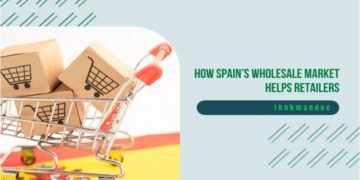E-commerce has reached a point where growth is no longer driven solely by ad budgets or viral content.
The real advantage—especially for brands operating in categories with high repeat-purchase potential—now comes from product consistency. Bags are one of the clearest examples.
Over the past two years, sellers across Amazon, Shopify, and TikTok Shop learned a painful truth: you can scale a winning campaign, but you can’t scale unpredictable quality. A bag that looks good in photos but fails in terms of stitching, hardware, or material durability quickly turns into a stream of low ratings, returns, and customer complaints.
From this shift, a new trend is emerging.
The Quiet Reshuffle in Bag Supply Chains
Sellers who used to operate with a “quick turnover” mentality are now prioritizing manufacturing stability. The logic is simple:
- E-commerce algorithms reward consistent reviews.
- Consistent reviews come from predictable production.
- Predictable production requires a manufacturer—not a middleman—who understands how small structural details affect long-term product performance.
This is particularly true in the bag category, where a single weak point (a loose strap, misaligned stitching, a zipper that feels cheap) can sabotage an entire product line.
As a result, many sellers are reassessing how they select partners. Some are moving away from short-term sourcing agents toward more established custom bag manufacturer partners.
—not for cheaper pricing, but for greater control over stability and iteration.
Why Bags Are More Sensitive to Manufacturing Quality Than Many Brands Expect
If you compare bags with categories like apparel or accessories, the risk curve is very different.
Bags demand a combination of:
- Functional strength
- Material compatibility
- Structural precision
- Aesthetic consistency
Any one of these being off by a small margin can lead to product failure.
For example:
- Canvas thickness affects printing clarity and shape retention.
- PU grain patterns influence perceived quality in lifestyle photos.
- Cotton webbing stretch rate changes how a tote sits on the body.
- Zipper puller thickness affects both feel and durability.
Brands often underestimate how fast negative feedback accumulates when these details aren’t controlled. Once the rating drops below 4 stars, advertising becomes far more expensive—and scaling becomes almost impossible.
Tote Bags: The Most Competitive Yet Most Misunderstood Category
Few bag types illustrate this better than tote bags.
They appear simple, but they are deceptively technical:
- The handle attachment must withstand daily loads.
- Fabric finishing determines how easily the bag wrinkles.
- Print adhesion varies drastically depending on the surface texture.
- Pattern alignment affects the premium impression in product photos.
This shift explains why the relationship between e-commerce brands and manufacturers is getting closer, more collaborative, and more long-term.
The Real Strategic Advantage in 2025
The brands winning this year are not the ones with the flashiest campaigns.
They’re the ones whose product lines don’t break—literally or figuratively.
The future of e-commerce growth isn’t about shouting louder; it’s about reducing friction in every interaction a customer has with your product.
And in categories like bags—where tactile quality, structure, and durability define user experience—the supply chain has become a strategic asset.
Brands that rebuild their manufacturing foundations now will find themselves able to scale faster, take more creative risks, and maintain healthier margins than competitors who rely on unstable sourcing.
This is why more brands now work with an experienced tote bag manufacturer partner.s
Who can guide the structural level, not just produce whatever is requested?
In 2025, tote bags remain one of the fastest-growing SKUs in e-commerce, but also one of the highest-return categories when manufacturing details are overlooked.
What E-Commerce Teams Are Actually Optimizing For
If you look at the decision-making of fast-growing DTC or marketplace brands, the pattern is clear.
They are no longer asking:
“Who can make this at the lowest price?”
Instead, they ask:
“Who can make this right and make it again the same?”
Consistency has become the core metric because consistency determines:
- Rating stability
- Advertising profitability
- Inventory predictability
- Brand trust
- Repeat-purchase potential
This shift explains why the relationship between e-commerce brands and manufacturers is getting closer, more collaborative, and more long-term.
The Real Strategic Advantage in 2025
The brands winning this year are not the ones with the flashiest campaigns.
They’re the ones whose product lines don’t break—literally or figuratively.
The future of e-commerce growth isn’t about shouting louder; it’s about reducing friction in every interaction a customer has with your product.
And in categories like bags—where tactile quality, structure, and durability define user experience—the supply chain has become a strategic asset.
Brands that rebuild their manufacturing foundations now will find themselves able to scale faster, take more creative risks, and maintain healthier margins than competitors who rely on unstable sourcing.












































































